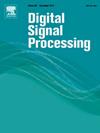学习Gabor层边缘检测网络
IF 2.9
3区 工程技术
Q2 ENGINEERING, ELECTRICAL & ELECTRONIC
引用次数: 0
摘要
近年来,轻量化边缘检测的研究受到了学者们的广泛关注。该模型具有计算复杂度低、参数尺度小的优点,但牺牲了检测精度。主要原因是该模型没有完全提取出底层和详细的特征。我们构建了一个学习Gabor层作为边缘检测网络(“编码网络+解码网络”)的前端,以增强模型提取底层和细节特征的能力。此外,它还可以帮助网络提取上下文语义特征并聚集在同一方向上的边。所提出的学习Gabor层仅包含150个参数,模型参数的总大小仅为0.49M。将学习Gabor层应用于我们设计的轻量级边缘检测网络(基线),并在四个基准数据集(BSDS-VOC, NYUDv2, BIPED, Multicue)上进行验证,证明了学习Gabor层的有效性。本文章由计算机程序翻译,如有差异,请以英文原文为准。
Learning Gabor layer for edge detection network
In recent years, lightweight edge detection research has attracted much attention from scholars. This type of model has the advantages of low computational complexity and small parameter scale but sacrifices detection accuracy. The main reason is that the model does not fully extract the underlying and detailed features. We construct a learning Gabor layer as the front part of the edge detection network (“encoding network + decoding network”) to enhance the model's capability to extract low-level and detailed features. In addition, it can assist the network in extracting contextual semantic features and aggregating edges that continue in the same direction. The proposed learning Gabor layer only contains 150 parameters, and the total size of the model parameters is merely 0.49M. Applying the learning Gabor layer to our designed lightweight edge detection network (baseline) and validating it on four benchmark datasets (BSDS-VOC, NYUDv2, BIPED, Multicue) demonstrate the effectiveness of the learning Gabor layer.
求助全文
通过发布文献求助,成功后即可免费获取论文全文。
去求助
来源期刊

Digital Signal Processing
工程技术-工程:电子与电气
CiteScore
5.30
自引率
17.20%
发文量
435
审稿时长
66 days
期刊介绍:
Digital Signal Processing: A Review Journal is one of the oldest and most established journals in the field of signal processing yet it aims to be the most innovative. The Journal invites top quality research articles at the frontiers of research in all aspects of signal processing. Our objective is to provide a platform for the publication of ground-breaking research in signal processing with both academic and industrial appeal.
The journal has a special emphasis on statistical signal processing methodology such as Bayesian signal processing, and encourages articles on emerging applications of signal processing such as:
• big data• machine learning• internet of things• information security• systems biology and computational biology,• financial time series analysis,• autonomous vehicles,• quantum computing,• neuromorphic engineering,• human-computer interaction and intelligent user interfaces,• environmental signal processing,• geophysical signal processing including seismic signal processing,• chemioinformatics and bioinformatics,• audio, visual and performance arts,• disaster management and prevention,• renewable energy,
 求助内容:
求助内容: 应助结果提醒方式:
应助结果提醒方式:


